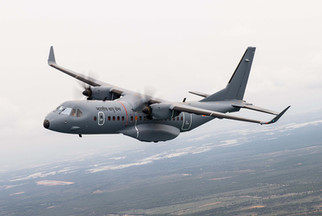
The French Defence Procurement Agency (Direction Générale de l'Armement) has entered into a contract with Airbus Defence and Space as the main contractor, in collaboration with Thales, to conduct a risk-assessment study for the upcoming maritime patrol aircraft programme. This 24-month contract succeeds the architecture and feasibility study initiated at the end of 2022.


“The A321 MPA (Maritime Patrol Aircraft) has all the assets to become a true flying frigate capable of responding to the wide range of missions entrusted to the French maritime patrol,” said Jean-Brice Dumont, Executive Vice President, Head of Air Power at Airbus Defence and Space. “Airbus offers a sovereign solution that provides the autonomy, availability and reliability required to contribute to the oceanic component of the nuclear deterrence.”

The purpose of this new definition study and risk-assessment contract is to lay the groundwork for the development and production launch of the maritime patrol aircraft program by the end of 2026. This study will advance the initial findings of the architecture study, refine the economic and industrial conditions for executing the program, guide the technical decisions regarding the systems to be integrated into the aircraft, and conduct the initial wind tunnel tests.

The A321 MPA is a military adaptation of the Airbus A321XLR, tailored to fulfil all operational needs of the French Navy, particularly in anti-submarine and anti-ship warfare across various intensity levels, as well as intelligence collection. The objective is to introduce a new aircraft to succeed the Atlantique 2 fleet used by the French Navy at the Lann-Bihoué (France) naval air base between 2030 and 2040.

The A321 MPA will possess long-range capabilities and high manoeuvrability, even at low altitudes. It will be outfitted with a comprehensive array of sensors tailored for maritime patrol aircraft, with Thales playing a significant role. These include state-of-the-art radar with active antennas, an acoustic system utilizing both passive and active sonar buoys, electronic and electro-optical warfare systems, magnetic anomaly detection (MAD), and self-protection systems.

It will also be equipped with communication systems, such as satellite communications, along with the necessary weapons for anti-submarine and anti-ship warfare, including torpedoes and the upcoming anti-ship missile (FMAN). The aircraft's spacious cargo bay and the open architecture of its mission system provide it with significant adaptability to address new threats as they arise throughout its lifecycle.

The remarkable success of the A320 Family, the top-selling single-aisle aircraft globally with over 10,000 units in operation and more than 300 million flight hours, guarantees that the A321 MPA benefits from established availability, reliability, and low maintenance expenses.

Airbus Defence and Space has considerable expertise in converting commercial aircraft into military versions, as demonstrated by the A330 Multi Role Tanker Transport (MRTT), which commands more than 90% of the global market share outside the United States. The company also excels in integrating sensors and mission systems on P3, C295, and CN235 aircraft, with over 170 of these planes engaged in maritime patrol and surveillance tasks worldwide.






























Comments